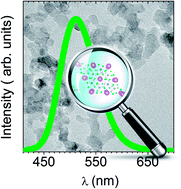Ask for a reprint
email :
* Give your email
2018
ACL
|
R.E.Rojas-Hernandez, F.Rubio-Marcos, A.Serrano, A.Rakhmatullin, C.Bessada, J.F.Fernandez, 'Unveiling the Role of the Hexagonal Polymorph on SrAl2O4-based Phosphors', RSC Adv. 8 28918–28927 (2018) doi:10.1039/c8ra05601c
In persistent luminescence materials, SrO-Al2O3 system has been mainly studied due to their chemical stability, higher photoluminescence response and longest afterglow times. Specifically, the research has focused on SrAl2O4 doped with europium and dysprosium. SrAl2O4 has two polymorphs: monoclinic polymorph (space group P21) and hexagonal polymorph (space group P6322). Besides, the coexistence of these two phases, monoclinic and hexagonal, appears in almost all the results. However, it is not clear how this coexistence has influence in optical response. Some authors have reported that only the monoclinic structure exhibits luminescent properties, while another suggests that the hexagonal SrAl2O4 polymorph has higher emission efficiency than the monoclinic polymorph. Here we report a systematic evaluation of the effects of the stabilization of hexagonal SrAl2O4 polymorph. We show that an interrelationship between the hexagonal polymorph and phosphorescent properties is the linchpin for the development of good luminescence properties. Remarkably, the stabilization of the hexagonal SrAl2O4 polymorph on the monoclinic-hexagonal polymorphic coexistence appears to be related to the preservation of the nanometric nature of the SrAl2O4-based system. Our results will help to understand the role of hexagonal polymorph in the polymorphic coexistence on SrAl2O4-based system and may facilitate the development of luminescent nanometric particles for the design and preparation of new light emitting materials.
|

|